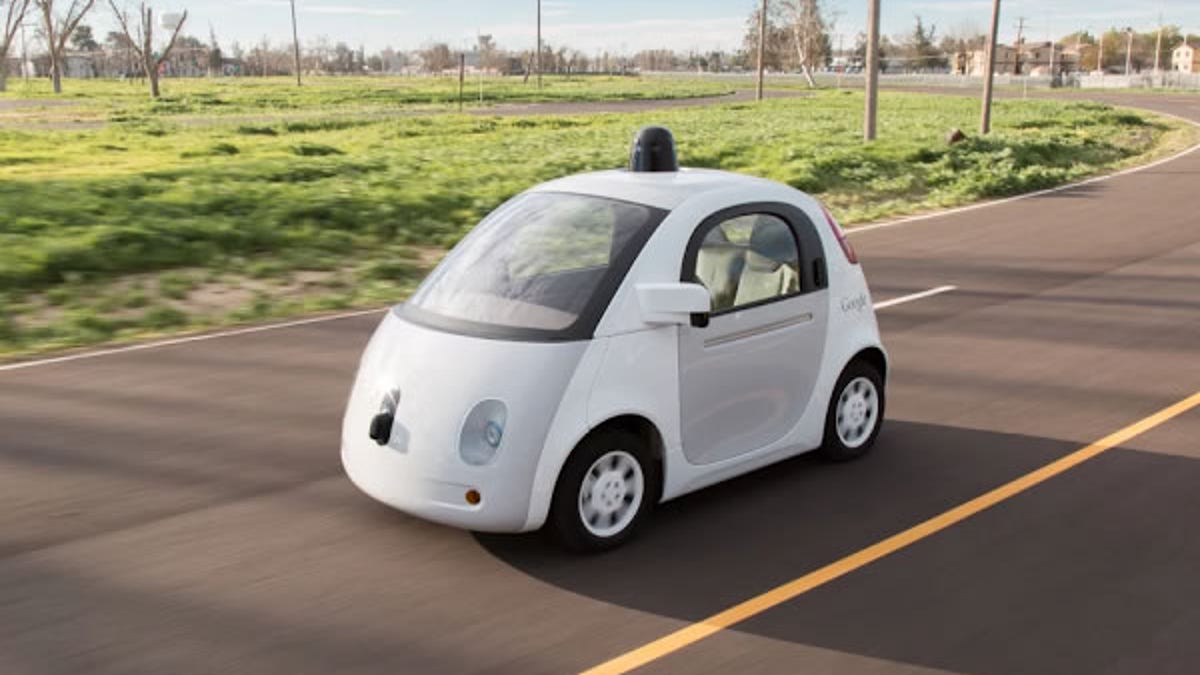Robo-car, go! Google's latest self-driving prototypes are heading to public roadways
The company's bubble-shaped autonomous vehicles will soon take to the streets of Google's hometown to see how they fare in real traffic -- and how we respond.

If you find yourself in Mountain View, California, in the coming months, keep an eye out for Google's newest self-driving cars.
There may not be many of them, but with their distinctive bubble shape, they'll be easy to spot.
The purpose-built prototype vehicles this summer will leave their initial test phase in the rear-view mirror and take to the public roadways of Google's hometown, Chris Urmson, director of the company's self-driving car program, said in a blog post Friday. He didn't give a precise number, saying just that it would be "a few of the prototype vehicles."
The cars will be driving themselves, but they will also have "safety drivers" aboard who can take over the wheel if necessary. That will be key to allaying worries among pedestrians and drivers of other vehicles that the robo-cars won't be ready for every situation.
Google was dinged at the start of this week over reports that some of its self-driving Lexus vehicles, which have already been on the roads, had gotten into accidents. The company acknowledged that over the past six years its self-driving cars had been involved in 11 "minor" accidents, but countered that there were no injuries, that the self-driving vehicles were not at fault and that certain accidents simply can't be avoided.
"Even when our software and sensors can detect a sticky situation and take action earlier and faster than an alert human driver, sometimes we won't be able to overcome the realities of speed and distance; sometimes we'll get hit just waiting for a light to change," Urmson wrote on Monday. "And that's important context for communities with self-driving cars on their streets; although we wish we could avoid all accidents, some will be unavoidable."
Self-driving cars are still a rarity and have largely been limited to testing facilities and other controlled conditions. But they are a seemingly inevitable next wave of technology that consumers and businesses will have to reckon with. Major automakers from Ford to Audi to Nissan have all been experimenting with autonomous vehicles, and many standard-issue models are now equipped with robotic skills including lane control and collision control and the ability to parallel-park themselves.
In March, Carlos Ghosn, CEO of the Nissan-Renault Alliance, said he expects the autonomous-driving revolution to have three phases -- a first wave emerging next year, followed by self-driving cars that can handle themselves on a highway by 2018 and then cars that can negotiate city driving by 2020.
Elon Musk, CEO of electric-car maker Tesla Motors, said that same month that he expects self-driving cars to be the norm within 20 years.
Unlike Google's earlier self-driving Lexus models, which were standard SUVs rigged up with gear to help them get around autonomously, the bubble-shaped cars coming to Mountain View's public roads are prototypes designed by Google from scratch.
The new cars will use the same software that's installed in the Lexus vehicles. The Lexus fleet has driven around 1 million autonomous miles on the roads since the project started, Google said, and the results of all that driving have been used to tune up the driving skills of the new fleet.
All safety drivers in the new prototypes will have a steering wheel, accelerator pedal and brake pedal that will allow them to take control if needed. The speed of the cars will be capped at 25 miles per hour.
Google has been running these particular cars through the paces at its test facilities to make sure the software and sensors work properly. Their debut in Mountain View will mark the first time this fleet will venture out onto public roads. Google spokeswoman Jacquelyn Miller told CNET that over the past year, the team working on the new self-driving fleet has focused on three tasks:
- Building the self-driving prototypes from scratch -- 25 of them to date. Google will roll out a few at a time starting this summer.
- Continuing to refine the software by self-driving around 10,000 miles of city streets every week.
- Developing the software's ability to handle "rare and weird situations" on the road -- what it refers to as the 0.001 percent of things that Google needs to be prepared for even if it has never seen that before in real-world driving.
The company will document the progress of its new self-driving public phase through the project's Google+ page. People who want to comment or ask questions about the project can share their thoughts on that page as well.
"We've had 20+ Lexus vehicles driving on Mountain View city streets for the last few years, but the arrival of our new self-driving vehicle prototypes marks the start of a new phase of our project," Miller told CNET. "We're proud of our driving record and development so far, and this new stage will help us understand what it really means to have self-driving vehicles in the world -- both how people in the community perceive and interact with them, and what the practical realities are for us in operating and maintaining them.

